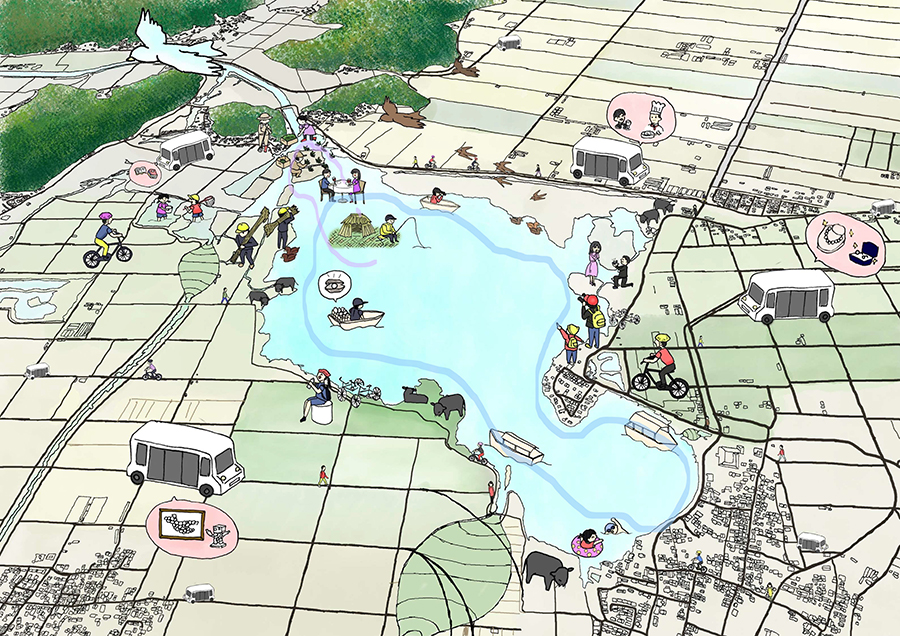Studio (3rd year, 2021)
- Seven-colored paths around the lagoon - revitalization of living with water
-
We cannot live without water. The oceans and rivers are sometimes a great threat, but they also bring us abundant blessings. Our ancestors have continued to live with water, fending off its fury. In the process of modernization, the troublesome association with water was eliminated, and the relationship with water became less and less important. In the era of climate change and the post-corona, can our relationship with water continue as it is today?
The same can be said for the coastal areas of Lake Biwa. As Sano (2003) points out, in the areas surrounding the lagoons, people engaged in fishing, weed catching, reed cutting, and other livelihood activities that were close to the environment, and multi-meaning spaces were formed in the gradual land-water transition zones as an ecosystem that includes humans. However, the zones have been transformed by changes such as reclamation of lagoons, construction of levees, improvement of rivers, expansion of harbors, development of agricultural fields, and creation of residential lots, as well as by artificial manipulation of water levels, and the multiple meanings of the spaces have been lost.
Sano, S. (2003) Traditional Utility System of the Environment of Naiko and Its Collapse in Villages Located on a Lagoon around Lake Biwa: Geographical Review of Japan 76(1) : 19-43
Drawn by Naruha Oya, Tomona Gondo, Mayu Suzuki, Kotaro Tani, Anna Matsuda, Mao Murai, Shohei Yamauchi, Yuki Yamanashi
Located in the center of the eastern shore of Lake Biwa, the Nishinoko is the largest of the few existing lagoons, and in 2006, the area was designated as an Important Cultural Landscape of Japan, and in 2008, it was recognized as an internationally important wetland under the Ramsar Convention. Because of these recognized scenic and ecological values, unlike the surrounding lagoons that have disappeared due to land reclamation, water bodies and water-land transition zones do indeed remain. However, it is rare to see the aspect of life with the lagoon, probably due to the changes of life style.
In recent years, Omihachiman City has been trying to utilize Nishinoko as the main feature of the city's future vision. This was triggered by the 2010 merger with Azuchi Town. This merger brought together the lagoon, which had previously been divided by the administrative boundaries. In August 2021, based on a four-way partnership agreement (between the city, the University of Shiga Prefecture, the Omi Hachiman Chamber of Commerce and Industry, and the Azuchi Town Chamber of Commerce and Industry), a "Conference to Promote the Development of the Nishinoko Circulatory Route" was launched, with plans to develop the route this fiscal year. By the end of the year, a basic policy for the development of the circulatory route will be formulated.
The students, while involved with the conference, developed a proposal for the regeneration (renewal) of the multiplicity of activities and spaces that exist with the lagoon.
- Instructor: Shuichi Murakami, Shinichi Todoroki





